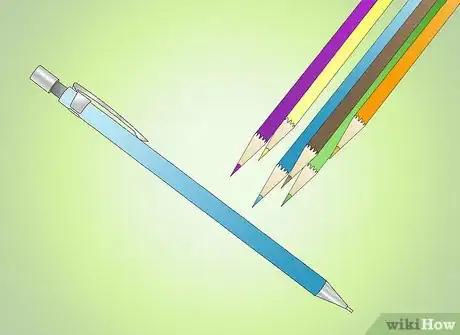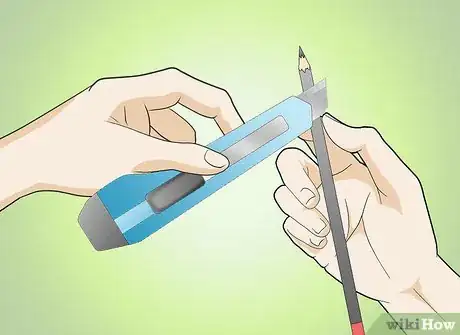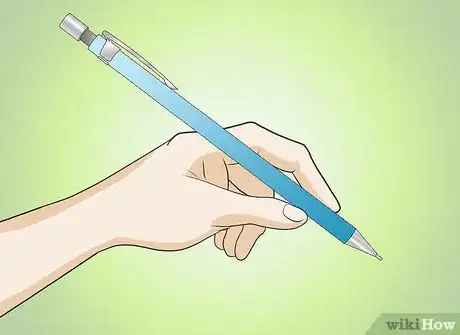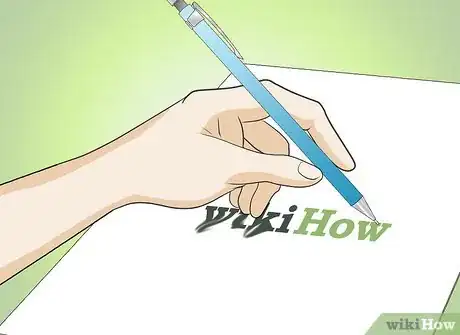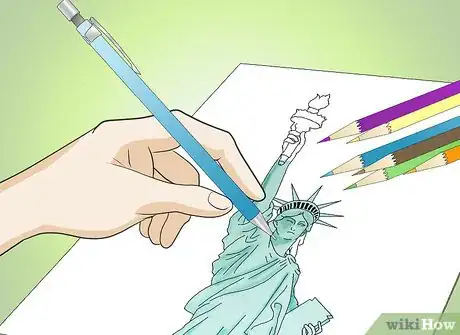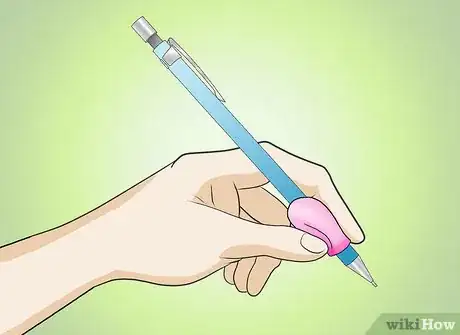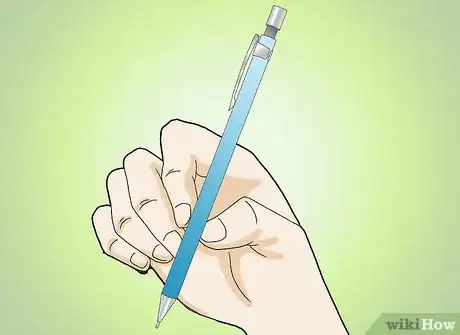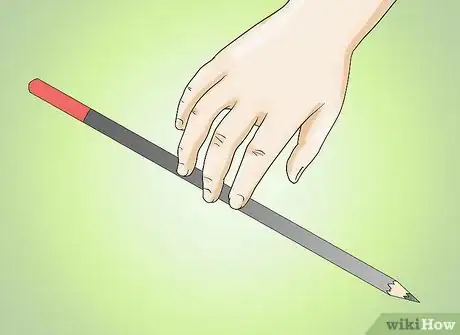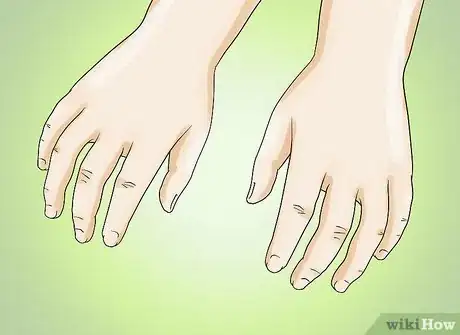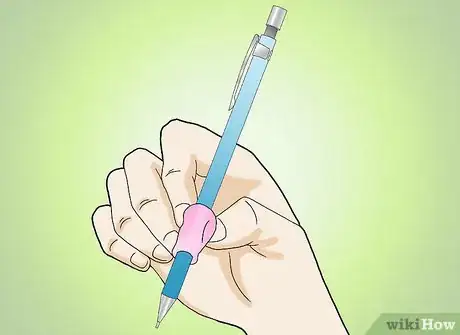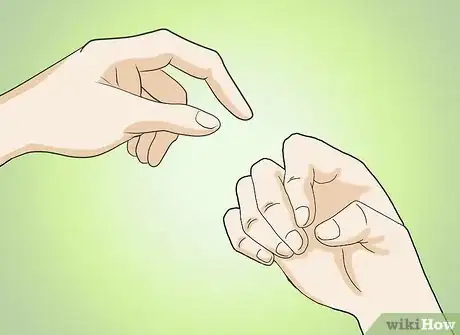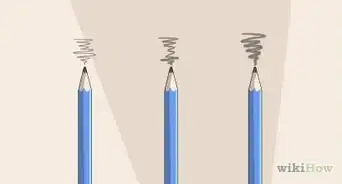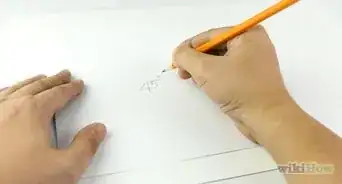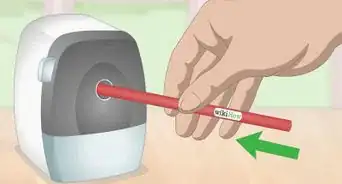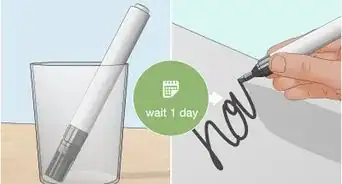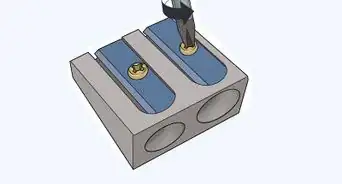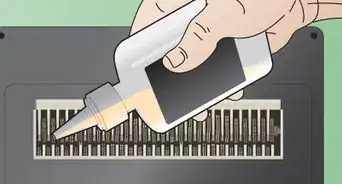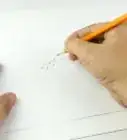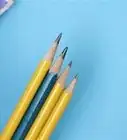wikiHow is a “wiki,” similar to Wikipedia, which means that many of our articles are co-written by multiple authors. To create this article, 17 people, some anonymous, worked to edit and improve it over time.
This article has been viewed 36,007 times.
Learn more...
Using a pencil may seem like an obvious topic for a how-to manual, but if you have hampered finger dexterity, poor fine motor skills, or want to teach an appropriate pencil grip to a child, going back to basics can be helpful.
Steps
If You Already Have the Tripod Grip
-
1Pick the right kind of pencil for your needs. Pencils come in many shapes and sizes: there are full-sized wooden pencils, mechanical pencils, small golf pencils, graphite pencils, charcoal pencils, carbon pencils, colored pencils, grease pencils, and watercolor pencils. Depending on whether you want to write, draw, sketch or colour, you may need to pick your instrument carefully.[1]
-
2Decide on a hardness and thickness. In Europe, pencils are classified on a continuum from "H" for hardness to "B" for blackness. Most people choose an HB pencil (in the middle of the spectrum) for regular writing, but go harder for light-marking needs or blacker for heavier marking needs (darker, stronger lines).[2]
- Mechanical pencils also offer a range of possibilities for lead thickness, usually ranging between 0.13 mm and 2.00 mm.[3] . For most regular writing and school purposes, people tend to use lead of size 0.5 mm or 0.7 mm.[4] If you're not sure what you need, just go with something in that range, and make sure that any extra lead you buy fits in the mechanical pencil you have.
Advertisement -
3Keep your pencil sharp, but not too sharp. If you're using a standard, non-mechanical pencil, you'll need to sharpen it. You can use a handheld sharpener, a manual (school-style) sharpener, an electric sharpener, or - if you're brave, a craft knife or razor blade. Some sharpeners come with containers to catch the shavings, too.
- If you sharpen your pencil into too fine a point, you may end up making it more likely to break. If your pencil is very sharp, avoid pushing down hard on the paper, particularly at an angle.
-
4Use your pencil. Once you're ready to go, use it! Write, draw, sketch, or color in whatever way you were planning to. If you're having trouble holding the pencil, use some tips from the section below on teaching about pencil grip. Re-sharpen the pencil when needed (or push the button to release more lead, if you're using a mechanical pencil).
-
5Avoid smudges. The biggest downside of a pencil is that it can smudge if you move your hand across the paper after writing. This happens especially to left-handed people, who often find that the heel of their writing hands drag along the paper and smudge what they've just written. If this happens to you, try adjusting your hand placement so that it doesn't smear so much.
- Using good quality pencils and paper will help avoid smudging. Harder pencils are also less likely to smudge, compared to softer/blacker pencils.
- Try putting another piece of paper under your hand. If you find your work is smearing a lot, place a small piece of scratch paper right under your writing hand (and sliding it along with you as you move your hand), to stop the sweat and oil from your hand from smudging the pencil.
-
6Erase as needed. The upside of pencil over pens or other writing utensils is that most of them can be erased. If you buy a high quality eraser and have a regular writing pencil, you should be able to erase your markings as needed to fix mistakes, reword writing, or adjust your sketching.
-
7Take your pencil game up a notch! If you're getting into drawing and writing with pencils, you might try drawing or writing with colored pencils, watercolor pencils. or charcoal pencils.
-
8Use a pencil grip if needed. Some people find it uncomfortable to write with pencils for extended periods of time. In this case, a pencil gripper can help provide comfort and improve pencil grasp. You can buy foam or rubber pencil grips to put on your pencils, or you can even make your own with Rainbow Loom bands or clay.
If You Need to Teach/Learn the Tripod Grip
- Holding a pencil isn't always as straight-forward for everyone as it seems. Children in particular often have trouble getting the grip right as they're learning how to write and draw. Some adults may also struggle with grip, if they have issues with dexterity or finger strength.
-
1Shoot for the tripod grip. The ideal pencil grip uses the writer's thumb, index finger, and middle finger, in a pinched motion. The writer should have their index finger on top of the pencil, and the thumb and middle finger underneath, supporting the pencil.
- Young children tend to hold pencils with a fist or palmer's grip and make big movements of the arm to draw or write. As they get older, the grip moves towards a five-finger and then tripod grip, and the writer goes from moving their whole arm to moving just their wrist and hand. As the grip develops further, the writer keeps their little and ring fingers curled up and writes using smaller movements of the fingers, hand, and wrist.
-
2Let toddlers and young children experiment with pencil holds. They don't need to hold the pencil correctly right away. In fact, trying to teach them the tripod grip at too young an age when their muscles aren't ready can actually lead to fine motor problems.[5] Young children are likely to hold the pencil with a fist, a palmar grasp, or all five fingers at once, and this okay at their stage.[5] Most kids develop the mature tripod grasp around ages 5 to 6, or even older.
-
3Use crafts and other fun fine motor activities to build finger dexterity in children. Let them play with playdough, do finger games, play with blocks and other small toys, make bead necklaces, and use scissors, glue, and other craft tools. The whole range of "preschool jobs" in this area helps to build finger strength and fine motor skills. By developing hand strength and finger dexterity, children will ready themselves for better writing with pencils later on.
-
4Try finger exercises for children and older individuals who need help with the pencil grip. If the writer is struggling even with crafts and fine motor play, try activities such as crumpling newspaper into a ball, rolling small balls and snakes from clay, and practicing finger control by balancing a beanbag on the fingertips (all five at the same time).[6] After developing strength through this kind of exercise, the writer will be better equipped to try crafts like origami and beadwork, and will hopefully develop the strength needed for a better pencil grip.
-
5Use a pencil grip if needed. Some children and other new writers benefit from the use of a pencil gripper/grasp. It guides their fingers into the correct position and helps make writing more comfortable. You can buy foam or rubber pencil grips to put on your pencils, or you can even make your own with Rainbow Loom bands or clay.
-
6Be patient and take breaks. If a child or other individual has difficulty holding a pencil or generally writing, it can be very frustrating for them. Don't heap on the pressure. Let them practice at their own pace, take breaks, and choose what kinds of activities to work on. If you're in an educational or parenting role, use a lot of positive reinforcement to encourage good writing and good pencil grip, rather than focusing on what they do "wrongly."
Community Q&A
-
QuestionIs pencil better than pen?
 Community AnswerIt depends on what you will use it for. Do not use a pencil for signing contracts or legal work. Use them for drawing or other tasks, like writing notes.
Community AnswerIt depends on what you will use it for. Do not use a pencil for signing contracts or legal work. Use them for drawing or other tasks, like writing notes. -
QuestionCan I write with my pencil using three fingers on the top and one on the bottom?
 Community AnswerI write with my pencil exactly the way you do, and I have not had any problem.
Community AnswerI write with my pencil exactly the way you do, and I have not had any problem.
Warnings
- Don't break your pencil lead, or you'll have to sharpen it!⧼thumbs_response⧽
References
- ↑ https://en.wikipedia.org/wiki/Pencil#By_marking_material
- ↑ https://en.wikipedia.org/wiki/Pencil#Grading_and_classification
- ↑ https://en.wikipedia.org/wiki/Pencil#By_manufacture
- ↑ https://en.wikipedia.org/wiki/Mechanical_pencil#Diameter
- ↑ 5.05.1http://www.ot-mom-learning-activities.com/pencil-grasp-development.html
- ↑ http://www.ot-mom-learning-activities.com/fine-motor-skills-activities-for-older-kids.html
About This Article
To use a pencil, hold the pencil in a tripod grip by putting your index finger on the top and your thumb and middle finger underneath to support the pencil. If you need help getting started, you can put a foam or rubber pencil grip on your pencil to guide your fingers into the right position. When you write, keep your pencil sharp but not too sharp or it will break more easily. Then, avoid smudges by putting a small piece of scratch paper under your writing hand and moving it along as you move your hand to absorb sweat and oil, which cause smudges. To learn how to pick a pencil that’s the right hardness and thickness for your writing, read on!
